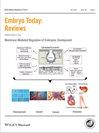Barbara A. Konkle
下载PDF
{"title":"Diagnosis and management of thrombosis in pregnancy","authors":"Barbara A. Konkle","doi":"10.1002/bdrc.21104","DOIUrl":null,"url":null,"abstract":"<p>Pregnancy-related thrombosis is a major cause of maternal mortality. Pregnancy and the puerperium are associated with a fourfold to fivefold increased risk of thrombosis when compared with the nonpregnant state. The greatest time of risk is in the postpartum period. Diagnosis of venous thromboembolism (VTE) during pregnancy can be challenging as many of the symptoms can be associated with normal pregnancy. Almost all deep venous thrombosis occurs in the left leg or iliac veins. Diagnostic procedures for pulmonary embolism carry some exposure to radiation, although risks are low when compared with risks associated with an undiagnosed maternal PE. The anticoagulant of choice during pregnancy is low-molecular-weight heparin. Certain medical conditions require alternative approaches as management around the time of delivery. In women with VTE during pregnancy, anticoagulation should continue for at least 3 months and until at least 6 weeks postpartum. Birth Defects Research (Part C) 105:185–189, 2015. © 2015 Wiley Periodicals, Inc.</p>","PeriodicalId":55352,"journal":{"name":"Birth Defects Research Part C-Embryo Today-Reviews","volume":"105 3","pages":"185-189"},"PeriodicalIF":0.0000,"publicationDate":"2015-09-24","publicationTypes":"Journal Article","fieldsOfStudy":null,"isOpenAccess":false,"openAccessPdf":"https://sci-hub-pdf.com/10.1002/bdrc.21104","citationCount":"17","resultStr":null,"platform":"Semanticscholar","paperid":null,"PeriodicalName":"Birth Defects Research Part C-Embryo Today-Reviews","FirstCategoryId":"1085","ListUrlMain":"https://onlinelibrary.wiley.com/doi/10.1002/bdrc.21104","RegionNum":0,"RegionCategory":null,"ArticlePicture":[],"TitleCN":null,"AbstractTextCN":null,"PMCID":null,"EPubDate":"","PubModel":"","JCR":"Q","JCRName":"Medicine","Score":null,"Total":0}
引用次数: 17
引用
批量引用
Abstract
Pregnancy-related thrombosis is a major cause of maternal mortality. Pregnancy and the puerperium are associated with a fourfold to fivefold increased risk of thrombosis when compared with the nonpregnant state. The greatest time of risk is in the postpartum period. Diagnosis of venous thromboembolism (VTE) during pregnancy can be challenging as many of the symptoms can be associated with normal pregnancy. Almost all deep venous thrombosis occurs in the left leg or iliac veins. Diagnostic procedures for pulmonary embolism carry some exposure to radiation, although risks are low when compared with risks associated with an undiagnosed maternal PE. The anticoagulant of choice during pregnancy is low-molecular-weight heparin. Certain medical conditions require alternative approaches as management around the time of delivery. In women with VTE during pregnancy, anticoagulation should continue for at least 3 months and until at least 6 weeks postpartum. Birth Defects Research (Part C) 105:185–189, 2015. © 2015 Wiley Periodicals, Inc.
妊娠期血栓形成的诊断与处理
与妊娠有关的血栓形成是孕产妇死亡的一个主要原因。怀孕和产褥期与未怀孕状态相比,血栓形成的风险增加了四到五倍。风险最大的时期是产后。妊娠期静脉血栓栓塞(VTE)的诊断具有挑战性,因为许多症状可能与正常妊娠有关。几乎所有的深静脉血栓都发生在左腿或髂静脉。肺栓塞的诊断过程有一定的辐射暴露,尽管与未确诊的母体PE相关的风险相比,风险较低。妊娠期间首选的抗凝血剂是低分子肝素。某些医疗状况需要在分娩前后采取其他管理方法。妊娠期有静脉血栓栓塞的妇女,抗凝治疗应持续至少3个月,直至产后至少6周。出生缺陷研究(C辑)105:185-189,2015。©2015 Wiley期刊公司
本文章由计算机程序翻译,如有差异,请以英文原文为准。

 求助内容:
求助内容: 应助结果提醒方式:
应助结果提醒方式:


